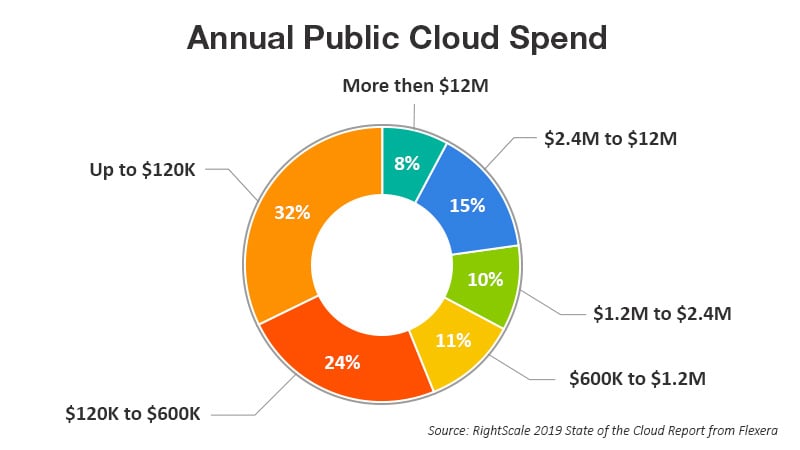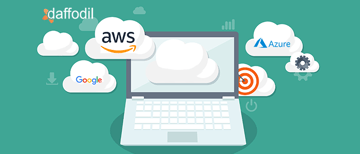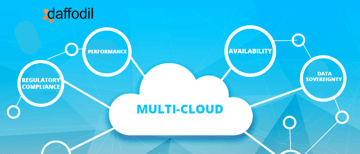
Cloud cost optimization in simple terms is attaining the proper balance between performance and cost and then maintaining it. It is the process of decreasing overall cloud spend by distinguishing mismanaged resources, discarding waste, holding capacity for higher discounts, and right-sizing computing services to sales.
For businesses to achieve cloud cost optimization, it is vital to have total visibility over their cloud accounts and control over future deployment. Organizations can benefit from cloud management as it offers unlimited scalability and lowers the IT cost by only charging for the resources that you use.
But the truth be said about Microsoft Azure and Amazon Web Services (AWS) pricing is that the customers are charged for the resources they ordered irrespective of the fact that they use them or not.
In a study by Craig Lowery and Brandon Medford, it was revealed that an estimated 70% of cloud cost management tools are wasted. Don’t be disheartened, there are some best practices for cloud cost optimization. Let us see what they are.
What Are Some Cloud Cost Optimization Best Practices?
1)Spot unattached and unused resources
One of the simplest avenues to optimize cloud cost is to search for unattached or unused resources. Many times developers or administrators use a temporary server to perform a function, and due to some reason forget to turn it off when the task is accomplished. Another common scenario is when a developer forgets to eliminate storage connected to instances they terminate.
These scenarios are a common occurrence in the IT departments across companies globally. As a result, companies are charged for Azure and AWS's resources that were once purchased but not longer used. For starters, a cloud cost optimization strategy should include the identification of these unused and unattached resources and eventually eliminating them.
2)Identify and Consolidate Idle Resources
A common computing instance may have a CPU utilization level of 1-5%. However, when an organization is billed for 100% of that computing instance, is just a waste. In my experience, the next step towards cloud cost optimization should be attending to the ideal resources. The strategy to follow would be to recognize these anomalies such as instances and consolidating computing jobs into fewer instances.
Today businesses are data centered, so the administrators want to operate at lower utilization, making room for spikes in traffic or a busy season. It is ill-advised to add new resources to the data center as it could be expensive, inefficient and difficult. On the flip side, the cloud offers load balancing, auto-scaling and on-demand capabilities that allows you to scale up your computing powers at any given time.

3)Using Heatmaps
One of the most important tools that might come in handy is Heatmaps. Heatmap is a visual tool that shows the ups and downs in computing demands. You can use this information to set a start and stop time to reduce costs. The cloud financial management practice known as FinOps also employs this strategy extensively.
A great example of using a heatmap is that it can indicate whether development servers can be securely shut down on the weekends. This can be done manually, however, a better option would be to automate scheduling instances to start and stop, to optimize cloud cost.
4)Right Size Computing Services
Right-sizing is the term coined for the method of analyzing computing services and transforming them to the most efficient size. A Gartner study showed that it is difficult to size instances correctly when cloud administrators have above 1.7 million possible combinations to choose from. Also, there are various options to optimize the server for the database, memory, computing, graphics, throughput, storage capacity and more.
Right-sizing can also prompt altercation across instance families when needed. CapEx vs OpEx is also a consideration to weigh in this regard. Cost reduction is not the only benefit it bears but also aids in cloud optimization, which can help achieve peak performance from the resources you have already paid for.
5)Opt For Reserved Instances
An organization plans to commit to continuing with the cloud should invest in Reserved Instances (RI) under their cloud cost optimization strategy. They offer great discounts based on time commitment and upfront payment. RI savings can add up to 75%, so it is a must choose for optimized cloud costs. It is to be noted that RIs can be purchased for a year or three, so it is vital to analyze the past usage and prepare for the near future.
6)Use Spot Instances
RIs and Spot Instances (SI) are different in many regards, however, they can help you save more on your AWS or Azure spend. Spots Instances can be purchased at a very good price at auctions and immediately put to use. The window to purchase these Spot Instances could be scarce, so it is best suited for batch and quick termination jobs. Jobs like these are a common scene in a large organization making it one of the best fits to include in the cloud cost optimization strategy.
7)Analyze Multi-Cloud vs. Single Cloud
Most organizations opt for the multi-cloud solution as it bypasses the vendor lock-in. Considering the use of the multi-cloud solution for is uptime and increasing availability, the organization may lose volume discounts by a single cloud vendor. Let's imagine that a company spends $600,000 on AWS, $200,000 on Azure and say around $200,000 on Google Cloud Platform, they could miss out on reaching a $1million tier with one vendor.
A spend of $1 million may get you a large discount on overall cloud spend, also would increase your relationship with the vendor. Additionally, the capability to save money with a multi-cloud strategy could be outshone by the nuisances caused by switching between platforms, paying extra for network traffic between clouds and the training of staff on multiple technologies.
ALSO READ: 7 FinOps Challenges around Cloud Cost Optimization
Conclusion
The cloud holds multiple benefits. Companies can save a lot of money if they use the cloud cost optimization strategies effectively. If you are in search of a Software Development partner to help you set your cloud ecosystem, Daffodil Software is your best bet.



